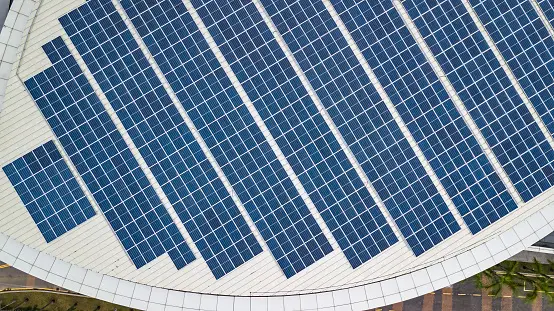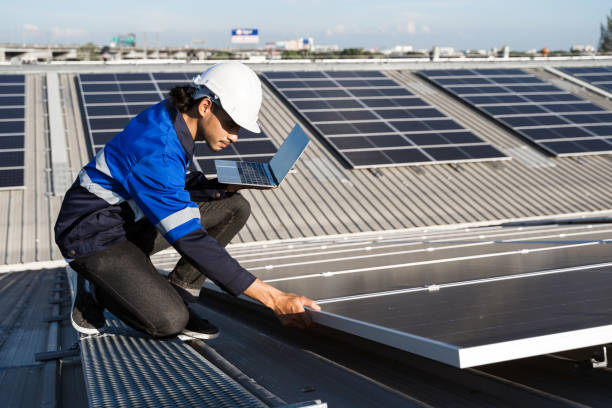Different Types of Solar Operating Systems In 2023

Different Types of Solar Operating Systems In 2023? Solar energy has gained immense popularity in recent years as a renewable and sustainable source of power. With the advancements in technology, various types of solar operating systems have emerged to harness the sun’s energy efficiently. In this article, we will explore the different types of solar operating systems in 2023, their benefits, and how they are revolutionizing the way we generate electricity.
Introduction to Solar Operating Systems
Solar operating systems are technologies that capture sunlight and convert it into usable electrical energy. They play a vital role in reducing our reliance on fossil fuels and combating climate change. Let’s dive into the various types of solar operating systems available today.
Photovoltaic (PV) Systems
Photovoltaic systems, commonly known as solar panel systems, are the most widely used solar operating systems. These systems utilize solar cells to convert sunlight directly into electricity. There are three main types of solar panels:
Monocrystalline Solar Panels
Monocrystalline solar panels are made from a single crystal structure, typically silicon. They are known for their high energy efficiency and sleek black appearance. Monocrystalline panels perform well in direct sunlight but may have reduced performance in shaded or cloudy conditions.
Polycrystalline Solar Panels
Polycrystalline solar panels are made from multiple silicon crystals. They have a distinctive blue color and are less expensive to produce than monocrystalline panels. While they are slightly less efficient, they perform better in low-light conditions.
Thin-Film Solar Panels

Thin-film solar panels are made by depositing thin layers of semiconductor materials on a substrate. They are flexible, lightweight, and can be integrated into various applications, such as building-integrated photovoltaics. Thin-film panels have lower efficiency compared to crystalline panels but are more cost-effective.
Concentrated Solar Power (CSP) Systems
Concentrated Solar Power (CSP) systems use mirrors or lenses to concentrate sunlight onto a receiver. The concentrated heat is then used to generate electricity through conventional power cycles. Here are three common types of CSP systems:
Parabolic Trough Systems
Parabolic trough systems use parabolic-shaped mirrors to concentrate sunlight onto a receiver tube located at the focal point. The heat is used to generate steam, which drives a turbine to produce electricity. Parabolic trough systems are widely deployed and have high operating temperatures.
Solar Power Towers
Solar power towers, also known as central tower systems, use an array of mirrors called heliostats to reflect and concentrate sunlight onto a receiver located on top of a tower. The heat is used to generate steam and drive a turbine. Solar power towers can achieve high temperatures and provide consistent power output.
Read More: Top 10 Principles of Computer Game Design In 2023
Dish Stirling Systems
Dish Stirling systems use a parabolic dish-shaped reflector to concentrate sunlight onto a receiver, which contains a Stirling engine. The Stirling engine converts the heat into mechanical energy, which is then used to generate electricity. Dish Stirling systems are highly efficient and suitable for decentralized power generation.
Solar Thermal Systems
Solar thermal systems utilize the sun’s heat to generate thermal energy for heating or cooling purposes. Here are three common types of solar thermal systems:
Flat Plate Collectors
Flat plate collectors consist of an insulated box with a dark-colored absorber plate, covered by a transparent glass or plastic cover. The sunlight is absorbed by the plate, which heats a fluid flowing through it. This heated fluid can then be used for space heating or water heating.
Evacuated Tube Collectors
Evacuated tube collectors consist of parallel rows of glass tubes, each containing an absorber plate. The tubes are evacuated to minimize heat loss. When sunlight is absorbed by the plate, the fluid within the tubes heats up and can be used for various applications, including hot water supply and space heating.
Integral Collector Storage Systems

Integral Collector Storage (ICS) systems, also known as batch or breadbox collectors, are simple and cost-effective solar thermal systems. They consist of an insulated box with a glazed window and a storage tank. The sunlight directly heats the water stored in the tank, eliminating the need for separate heat transfer fluids.
Hybrid Solar Systems
Hybrid solar systems combine solar power with other energy sources to ensure a consistent power supply. Here are a few examples of hybrid solar systems:
PV + Battery Systems
PV + Battery systems store excess solar energy in batteries for later use, providing electricity during periods of low or no sunlight. These systems offer greater energy independence and can be particularly useful in off-grid or remote locations.
PV + Wind Systems
PV + Wind systems combine solar and wind power generation. This hybrid approach takes advantage of both sunlight and wind resources, enhancing energy production and providing a more stable power supply.
PV + Diesel Generator Systems
PV + Diesel Generator systems integrate solar panels with diesel generators. The solar panels reduce the load on the generator during daylight hours, resulting in lower fuel consumption and reduced emissions.
Advantages of Solar Operating Systems

Solar operating systems offer numerous advantages over conventional energy sources. Some key benefits include:
- Renewable and sustainable energy source
- Reduced greenhouse gas emissions
- Energy cost savings in the long run
- Low maintenance requirements
- Modular and scalable installations
- Energy independence in remote areas
Challenges and Future Trends
While solar operating systems have made significant progress, they still face a few challenges. Some of the current limitations include the intermittency of sunlight, high upfront costs, and the need for efficient energy storage solutions. However, ongoing research and technological advancements are addressing these challenges.
Future trends in solar operating systems include the development of more efficient solar panels, advanced energy storage technologies, and integration with smart grid systems for optimized energy management.
Conclusion
Solar operating systems have diversified and evolved in 2023, providing a wide range of options for harnessing solar energy. From photovoltaic systems to concentrated solar power, solar thermal, and hybrid systems, each technology has its unique benefits and applications. Embracing solar energy not only helps combat climate change but also offers long-term economic and environmental advantages.











